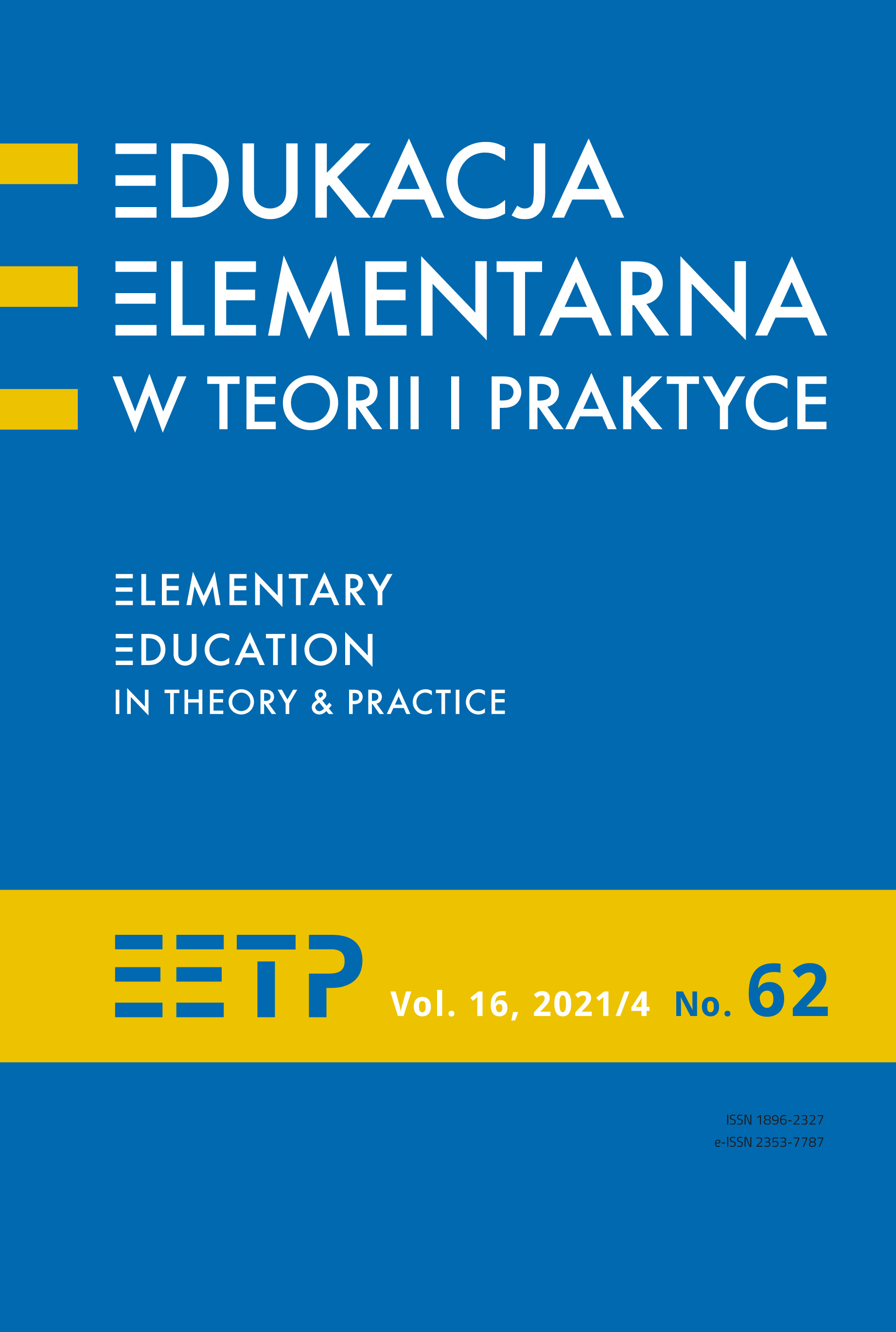Male and Female Role Models in Contemporary Culture and Personal Values Preferred by Third-Grade Pupils in Primary School
Abstract
The presence of egalitarian gender role models in contemporary culture does not mean that traditional models of femininity and masculinity have been completely superseded. The multitude of simultaneous gender role models may make third-grade pupils, who come out of late childhood and stand on the threshold of adolescence - a critical time for the formation of a stable identity, confused as to which of the known patterns of masculinity and femininity they should follow in their lives. The presented research aimed to explore personal values preferred by male and female pupils of the third grade of primary schools. The main problem was contained in the question: Are there gender differences among male and female pupils of the third grade of primary school in terms of their preferred personal values? The research used the method of a diagnostic survey; the tool was the Personal Values List developed by Z. Juczyński. Also, 311 third-grade pupils from the Lesser Poland region participated in the research. The analysis of the collected research material showed that in such categories as "love, friendship" and "kindness, gentleness", there was a statistically significant predominance of girls. At the same time, there was a predominance of boys in the area of "intelligence, sharpness of mind" and "wealth, property". The findings of this study partly confirmed the hypothesis: There are gender differences among pupils in primary school in the area of preference for those personal values that are traditionally considered typical for representatives of their sex.
References
Bakiera L., Harwas-Napierała B. (2016). Wzory osobowe w rozwoju człowieka, Poznań: Wydawnictwo Naukowe UAM.
Fanslau A., Brycz H. (2006). Pokusy i ich wpływ na natężenie wyznawanych wartości wśród młodych kobiet i mężczyzn, [w:] A. Chybicka, M. Kaźmierczak (red.), Kobieta w kulturze – kultura w kobiecie. Studia interdyscyplinarne, Kraków: Oficyna Wydawnicza „Impuls”, s. 315 330.
Gimbut M. (2007). Przetłumaczyć i zrozumieć Wzór kobiecości – perspektywa antropologiczna, [w:] B. Płonka-Syroka. J. Radziszewska, A. Szlagowska (red.), Oczekiwania kobiet i wobec kobiet Stereotypy i wzorce kobiecości w kulturze europejskiej i amerykańskiej, Warszawa: Wydawnictwo: DiG, s. 359 368.
Juczyński Z. (2001). Narzędzia pomiaru w promocji i psychologii zdrowia, Warszawa: Pracownia Testów Psychologicznych Polskiego Towarzystwa Psychologicznego.
Kluczyńska U. (2009). Metamorfozy tożsamości mężczyzn w kulturze współczesnej, Toruń: Wydawnictwo Adam Marszałek.
Linton R. (2000). Kulturowe podstawy osobowości, tłum. A. Jasińska-Kania, Warszawa: Wydawnictwo Naukowe PWN.
Melosik Z. (2006). Kryzys męskości w kulturze współczesnej, Kraków: Oficyna Wydawnicza „Impuls”.
Nowak W. (2015). Dobro i wzory osobowe, STUDIA PHILOSOPHICA WRATISLAVIENSIA, vol. X, fasc. 4, s. 65 76.
Olbrycht K. (2014). O roli przykładu, wzoru, autorytetu i mistrza w wychowaniu osobowym, Toruń: Wydawnictwo Adam Marszałek.
Smółka L. (2006). Edukacja wobec stereotypów ról płciowych, [w:] J. Szempruch (red.), Edukacja wobec wyzwań i zadań współczesności i przyszłości, Rzeszów: Wydawnictwo Uniwersytetu Rzeszowskiego, s. 457–466.
Wzór osobowy hasło [w:] Nowa encyklopedia powszechna PWN (1995 1996), red. B. Pertozolin-Skowrońska , t. 1–6, Warszawa: Wydawnictwo Naukowe PWN, s. 942.
Zbróg Z. (2011). Płeć jako kategoria różnicująca opinie uczniów o szkole, [w:] I. Adamek, Z. Zbróg (red.), Wczesna edukacja dziecka wobec wyzwań współczesności, Kraków: Wyd. LIBRON.
Zimbardo P., Coulombe N. (2015). Gdzie ci mężczyźni? tłum. M. Guzowska, Warszawa: Wydawnictwo Naukowe PWN.
Copyright (c) 2021 Elementary Education in Theory and Practice

This work is licensed under a Creative Commons Attribution-NoDerivatives 4.0 International License.
- When submitting a text, the author declares that he/she is the Author of the article (hereinafter referred to as the “Work”) and:
- he/she owns the exclusive and unlimited copyright to the Work,
- is entitled to dispose of the copyright to the Work.
Declares that it does not infringe any third party copyrights or legal rights.
Declares that there is no conflict of interest.
2. At the same time, the Author grants the Ignatianum University in Cracowa royalty-free, non-exclusive and territorially unlimited licence to use the Work in the following fields of exploitation:
- recording the Work in a hard copy, as well as on a digital or magnetic medium;
- reproduction of the Work using any technique, without limitation of the number of editions or copies;
- distribution of the Work and its copies on any medium, including marketing, sale, lending, and rental;
- introduction of the Work into a computer memory;
- disseminating the Work in information networks, including in the Internet;
- public performance, exhibition, display, reproduction, broadcasting and re-broadcasting, as well as making the Work available to the public in such a way that everyone can have access to it at a time and place of their own choosing;
- within the scope of dependent rights to the Work, including in particular the right to make necessary changes to the Work resulting from editorial and methodical development, as well as to translate the Work into foreign languages;
The licence is granted from the moment of the transfer of the Work to the Ignatianum University in Cracow. The Ignatianum University in Cracow is entitled to grant further sub-licences to the Work within the scope of the right granted. The licence is time-limited and it is granted for a period of 15 years, starting from the date of its granting.
Authors are permitted and encouraged to publish their text online (e.g. in their institution’s repository or on the institution’s website) before or during the submission process as this may lead to beneficial exchanges, as well as earlier and greater citation of the published text (See The Effect of Open Access). We recommend using any of the following portals of research associations:
- ResearchGate
- SSRN
- Academia.edu
- Selected Works
- Academic Search




